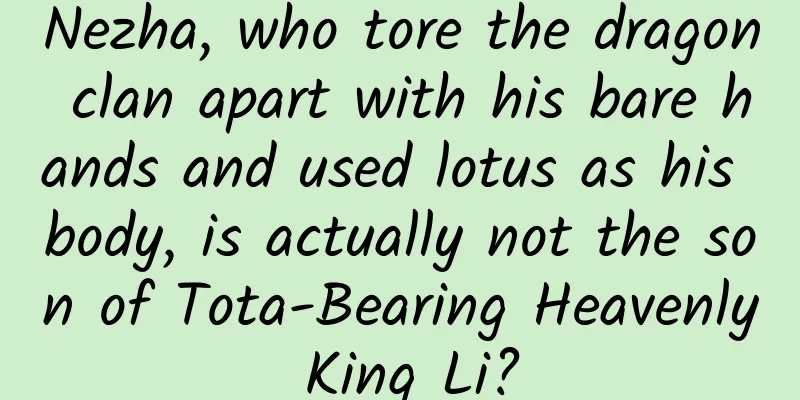Why did Sancai disappear after the Tang Dynasty?

|
As we all know, China's Tang Sancai pottery, with its colorful glaze and smart shapes, has written a strong and colorful chapter in the history of world ceramics. However, these ingenious works of art suddenly disappeared from the historical stage after the 9th century AD and became a thing of the past. The demise of Sancai pottery is actually much more complicated than the superficial phenomenon. After the An-Shi Rebellion, the northern ceramics industry suffered a heavy blow. According to the Old Book of Tang, "the kilns in Gong County were completely destroyed and the craftsmen were scattered." The kiln workers who once mastered the core technology lost their traces in the war. During the Huang Chao Uprising in the late Tang Dynasty, the official kilns in Chang'an were completely burned down, and the secret glaze formula was also scattered with the ashes. During the Five Dynasties, although tri-color was occasionally fired, according to the Song Huiyao, when the government recruited craftsmen in the second year of Jianlong (961), "only one in ten good tri-color workers remained." The pottery molds unearthed from the Ding kiln site during the Song Dynasty show that kiln workers tried to re-fire tri-color pottery, but the glaze was turbid and dull. Scientific tests show that the Song people failed to master the precise proportions of metal oxides such as copper, iron, and cobalt in Tang Dynasty glazes, and lost the unique "secondary firing" process of tri-color pottery. As for the mottled glaze on the egg white glaze pottery of the Yuan Dynasty, it is nothing more than a vague reflection of the Tang people's skills. At this point, some people may ask, didn’t the Liao Dynasty also have tri-color? Why didn’t the Liao Dynasty’s tri-color technique be passed down? In fact, the tri-color pottery of the Liao Dynasty was not a simple continuation of the craftsmanship of the Tang Dynasty, but a selective inheritance driven by cultural identity and practical needs by the Khitan nobles. In the early Liao Dynasty, the glazed pottery technology was obtained by plundering craftsmen from the Xing Kiln and Ding Kiln in Hebei. The tri-color Capricorn pot unearthed from the Liao Tomb of Yemaotai in Faku, Liaoning, has a lead glaze formula highly similar to that of the tri-color pottery of the Tang Dynasty, but the body clay was changed to kaolin, which is unique to the Liao area, and the firing temperature was reduced by about 50°C. The tri-color pottery of the Liao Dynasty turned from a funerary object of the Tang Dynasty to a practical object. The tri-color plate with the word "official" found at the Chifeng Clay Kiln Site proves that it entered the system of court utensils. The Khitan people combined the shapes of the leather bag pot and cockscomb pot, which were loved by nomadic peoples, with the tri-color craftsmanship to form a unique grassland aesthetic. Buddhism flourished in the Liao Dynasty. The tri-color Buddha statues and fragments of the sutra pillar unearthed from the Huayan Temple in Datong show that religious needs maintained the production of tri-color pottery. This is completely different from the ecology of the tri-color pottery of the Tang Dynasty, which relied on the funeral market. To put it simply, the tri-color pottery of the Liao Dynasty does not have blue, so the tri-color pottery of the Liao Dynasty cannot be equated with the tri-color pottery of the Tang Dynasty. The demise of the Sancai craft during the Song and Yuan dynasties was essentially the elimination of Sancai technology by more advanced techniques. First, there was a generation gap between the low-temperature lead glaze (about 800°C) that Sancai relied on and the lime-alkali glaze (above 1200°C) that emerged in the Song Dynasty. After the kiln workers in Jingdezhen discovered the binary formula of kaolin-porcelain stone, the physical properties (hardness, light transmittance) of high-temperature porcelain completely crushed lead-glazed pottery, and lead glaze technology became a marginal process. Secondly, the cobalt blue glaze in Tang Sancai relied on imported Persian cobalt materials. Due to the blockage of the Silk Road, the Liao Dynasty switched to local cobalt mines (as evidenced by the Niuxintai cobalt mine site in Benxi, Liaoning), and the color was gray. After the rise of blue and white porcelain in the Yuan Dynasty, precious cobalt materials were given priority to blue and white production, completely cutting off the raw material supply chain of Sancai. Finally, the cost efficiency of new decorative techniques such as white ground black flowers of Cizhou Kiln and carved flowers of Yaozhou Kiln far exceeded that of hand-glazed glazing. The egg white glaze and underglaze red of the Yuan Dynasty opened up a new dimension of monochrome glaze aesthetics, and the color block combination pattern of Sancai appeared primitive and clumsy. Of course, the demise of sancai is not just the loss of craftsmanship. In the Song Dynasty, social trends were dominated by literati. Su Shi's "The Mutual Sensation of Things" advocated "the use of utensils to convey the truth", and the scholar-official class admired the implicit beauty of celadon "the sky is blue after the rain". The rise of Jingdezhen blue-and-white porcelain marks the shift of ceramic aesthetics from the flamboyant and extroverted style of the Tang Dynasty to the elegant and restrained style of the Song Dynasty. The ink and wash artistic conception on the white-ground black-flowered porcelain of Cizhou Kiln echoes the literati painting style that was popular at the time. The change of funeral customs accelerated the demise of Sancai. The Song people followed Sima Guang's "Book of Rites" and advocated simple burials. Sancai funerary objects were regarded as "extravagant things". Archaeological discoveries show that the size of pottery figurines in tombs has been significantly reduced since the middle of the Northern Song Dynasty, and glazed pottery has gradually been replaced by plain pottery. When practicality and aesthetics were separated, Sancai finally withdrew from the stage of history. However, there is no need to be too regretful. In fact, the tri-color craft has not completely disappeared, but has lurked in the history of Chinese ceramics in the form of technical fragments. The Cizhou kiln in the Jin Dynasty once produced "Song tri-color", but used rust color instead of cobalt blue. The tri-color pillow unearthed from the Jin Tomb in Houma, Shanxi Province proved that its quality had greatly deteriorated. The plain tri-color of the Zhangzhou kiln in the Ming Dynasty continued the low-temperature glaze process, but transformed into export porcelain (called "Jiaozhi ware" in Japan), completely disconnected from the mainstream of Central Plains ceramics. The plain tri-color of the Kangxi period of the Qing Dynasty was actually an antique handicraft, using porcelain instead of pottery, and lost the material gene of the tri-color of the Tang Dynasty. The disappearance of Tang Sancai is not a simple technological failure, but a cultural choice during the transition period of civilization. It is like a projection of the heyday of the Tang Dynasty, gradually dimming with the transfer of the light of the times. Those Sancai pottery buried deep underground not only carry the crystallization of the wisdom of the craftsmen of the prosperous Tang Dynasty, but also a unique interpretation of life, death and eternity of an era. Source: Chongqing Science Writers Association Author: Zou Qinjia, Class 1, Cultural and Historical Studies, Grade 2021, Hebei Oriental University Audit expert: Li Hanbin Statement: Except for original content and special notes, some pictures are from the Internet. They are not for commercial purposes and are only used as popular science materials. The copyright belongs to the original authors. If there is any infringement, please contact us to delete them. |
<<: Mars' leopard print may be the most powerful evidence of life
Recommend
5 key words for brand promotion strategy in 2019!
The rise of mobile terminals has ended the 40-yea...
Can crossing your legs cause varicose veins? The truth is...
Myth: "Crossing your legs can cause varicose...
Judging from the sales of Double 11, the conclusion that the OTT industry is dying is absurd
In just 38 minutes, Tmall’s total sales reached t...
How do educational platforms acquire customers at low cost?
Under the epidemic, the market investment cost of...
Will artificial intelligence make weather forecasts more accurate? my country's new achievement is published in a top international journal
Since ChatGPT came out and artificial intelligenc...
Apple Watch sapphire screen test: too brutal
The biggest regret of iPhone 6 is not the lack of...
How much is the account opening fee for Baidu Ai Purchasing? How to open a store on Baidu Ai Purchasing?
How much is the account opening fee for Baidu Ai ...
Information flow advertising delivery is unstable, how to optimize it?
Written in front In response to recent feedback fr...
4 months of practical short video skills!
Although I have been working in new media, I have...
14 seconds! China's own CPU + operating system achieves a leap forward
1 second, 2 seconds, 3 seconds... Several "c...
TikTok's popular speaker Sony SRS-XB31 vs. JBL Pulse3, which one is the real Rock&Roll!
In the past, people basically listened to music w...
Taobao Live: 90% of brands’ large-scale self-entertainment live pictures!
Weibo in 2015, WeChat in 2016, Xiaohongshu in 201...
How can Mini Programs effectively engage in fission marketing?
In this issue, I will share with you the efficien...
WeChat 7.0.20 beta version released, adding these three new features
Just today, WeChat launched the Android 7.0.20 be...
Falling in love with AI: Can an “ideal” partner that meets all your expectations replace a real-life intimate relationship?
Qixi Festival is the most romantic traditional fe...









